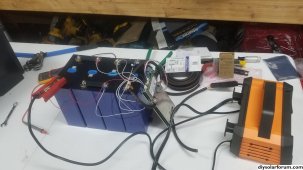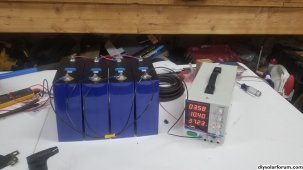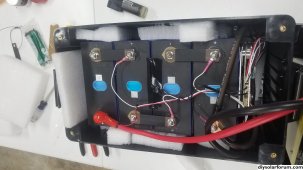It's an option I guess but would it not take a huge amount of time?Why not simply use the seplos and leave cells on case ?
Disconnect BMS leads
Charge individual cells until 3.6 until 1a.
Connect BMS after nr 16 is done
The rest of balancing can be handled by the seplos
For example, assuming cell SoC is now 30%, charging at 3.6v @ 10A is 36W so it would take around 14hrs to add 50% (480Wh) charge. 14hrs x 32 cells = 19days.





